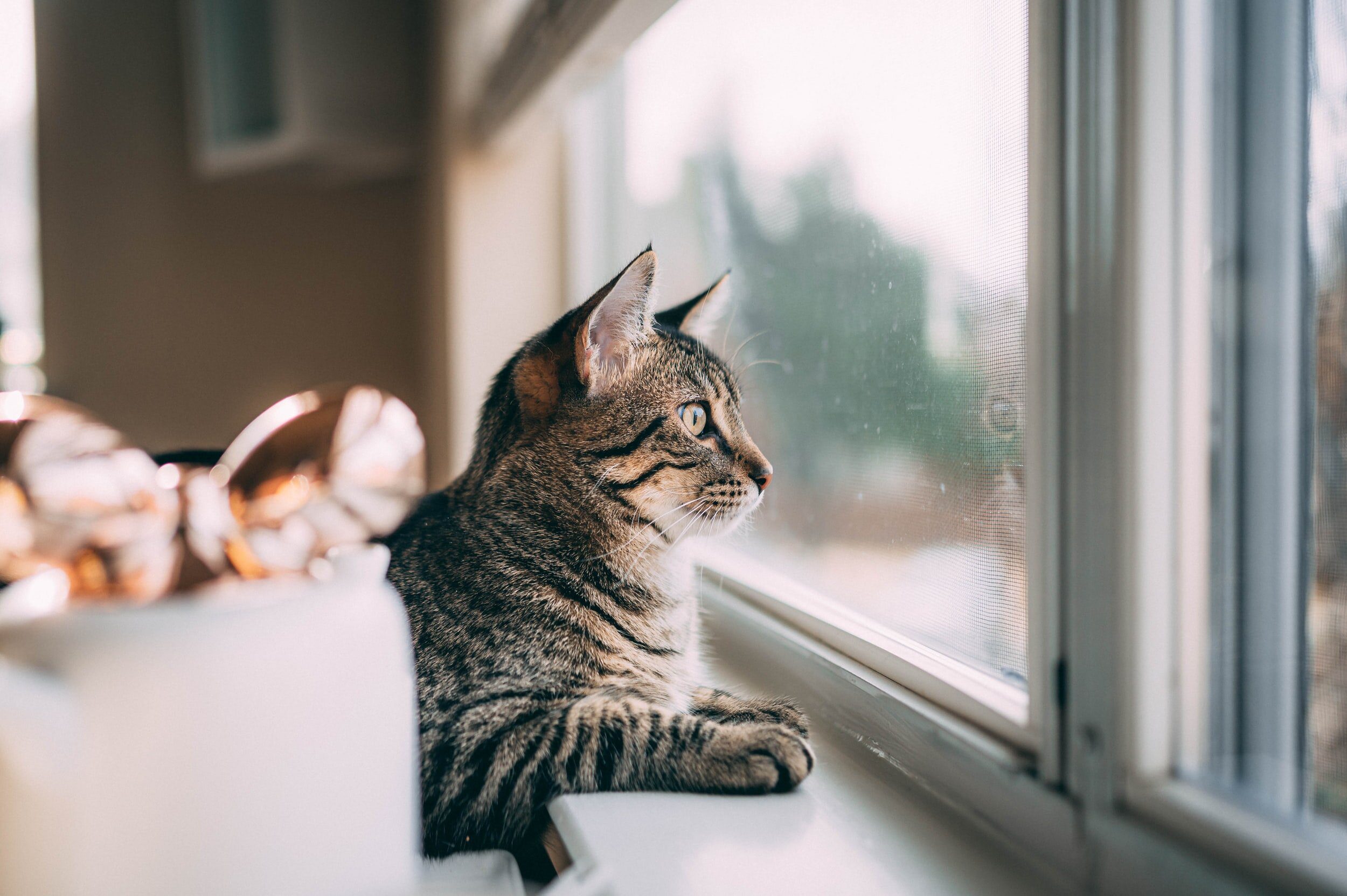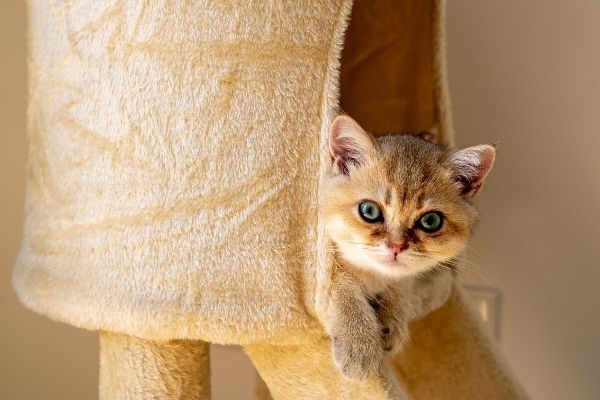Are you the proud owner of an adventurous feline friend? If so, you know all too well the thrill of watching your cat explore the great outdoors. But what if I told you that keeping your adventurous cat indoors could actually benefit them in ways you never imagined? In this article, we will uncover the secrets of escape artists and reveal why understanding this topic is essential for any cat owner. By delving into the world of indoor cats, we will discover how to provide a safe and stimulating environment for our furry companions. So, buckle up and get ready to embark on a journey that will forever change the way you view your adventurous cat!
Key Takeaways:
- Indoor cats live longer and healthier lives compared to outdoor cats.
- Creating an enriching indoor environment with toys, scratching posts, and perches can help satisfy your cat's natural instincts.
- Regular playtime and exercise are essential for keeping adventurous cats stimulated and preventing boredom.
- Installing window perches or providing access to a secure outdoor enclosure can give indoor cats a taste of the outdoors while keeping them safe.
- Proper identification, such as microchipping or wearing a collar with tags, is crucial in case your adventurous cat accidentally escapes.
Why it's important to keep your adventurous cat indoors
Keeping your cat indoors is crucial for their safety and well-being. While it may seem like cats are independent and can take care of themselves outside, they face numerous dangers. Outdoor cats are exposed to risks such as traffic accidents, attacks from other animals, and contracting diseases from other cats. Additionally, they may get lost or stolen, leaving you heartbroken and worried.
By keeping your cat indoors, you can protect them from these hazards and ensure their longevity. Indoor cats generally live longer lives than outdoor cats because they are not exposed to as many threats. They also have a lower risk of developing health issues caused by fights or encounters with wild animals.
Potential dangers for outdoor cats: what you need to know
When your cat roams freely outdoors, they face various potential dangers that can seriously harm them. One major threat is traffic accidents. Cats crossing roads are at high risk of being hit by cars, which can result in severe injuries or even death.
Outdoor cats are also vulnerable to attacks from other animals such as dogs or larger predatory wildlife like coyotes. These encounters can lead to serious injuries or even fatal consequences for your beloved feline friend.
In addition to physical dangers, outdoor cats are more likely to contract diseases from other cats they come into contact with. Feline leukemia virus (FeLV) and feline immunodeficiency virus (FIV) are two common infections that can be transmitted through bites or close interactions with infected cats.
Creating an enriching indoor environment for your cat
Just because your cat is staying indoors doesn't mean they have to miss out on the excitement and stimulation of the outdoors. By creating an enriching indoor environment for your cat, you can provide them with plenty of mental and physical stimulation.
Start by setting up a designated play area for your cat, complete with scratching posts, climbing structures, and interactive toys. This will allow them to engage in natural behaviors like scratching, climbing, and pouncing. You can also provide puzzle toys or treat-dispensing toys to keep their minds active.
Additionally, consider creating a window perch or installing bird feeders outside the windows to give your cat a view of the outside world. This will allow them to observe birds and other wildlife, providing entertainment and mental stimulation.
Exploring alternatives to letting your cat roam freely outside
If you're concerned about keeping your cat indoors all the time, there are alternatives that can still provide them with outdoor experiences while keeping them safe. One option is to create a secure outdoor enclosure or "catio" where your cat can enjoy fresh air and sunshine without being exposed to dangers.
A catio can be built on a balcony, patio, or in your backyard. It should be fully enclosed with sturdy walls or mesh screens to prevent escapes and protect your cat from predators. Inside the catio, you can add shelves, perches, and hiding spots for your cat's enjoyment.
Another alternative is leash training your cat. With patience and positive reinforcement, you can teach your cat to walk on a harness and leash. This allows you to take them outside for supervised walks while ensuring their safety.
Tips for training your cat to stay indoors and be safe
- Gradually transition your cat from outdoor life by limiting their time outside each day until they become accustomed to staying indoors.
- Create a comfortable indoor environment with cozy beds, hiding spots, and vertical spaces for climbing.
- Provide plenty of toys and interactive playtime to keep your cat mentally and physically stimulated.
- Use positive reinforcement, such as treats and praise, to reward your cat for staying indoors and using their designated scratching posts or litter boxes.
- Consider using deterrents like double-sided tape or aluminum foil on windowsills or furniture to discourage your cat from trying to escape.
Providing mental and physical stimulation for an indoor cat
Indoor cats need plenty of mental and physical stimulation to prevent boredom and maintain a healthy lifestyle. Engage in interactive play sessions with your cat using toys that mimic prey, such as feather wands or laser pointers. This will help satisfy their natural hunting instincts.
Incorporate puzzle toys into your cat's daily routine to provide mental challenges. These toys usually require the cat to figure out how to access treats hidden inside, keeping them entertained and mentally sharp.
Creating vertical spaces like shelves or cat trees allows your cat to climb, jump, and explore their environment. This not only provides exercise but also gives them a sense of territory and security.
Breeds and characteristics that make a cat more prone to escaping
While all cats have the potential to be curious adventurers, some breeds are known for their strong desire to explore and escape. For example:
Abyssinian:
The Abyssinian breed is highly active, intelligent, and agile. They have a natural curiosity that can lead them to seek outdoor adventures if not provided with enough mental stimulation indoors.
Bengal:
Bengal cats are known for their wild appearance and energetic nature. They have a strong prey drive and love climbing trees, making them more likely to attempt an escape if they feel confined indoors.
Siamese:
Siamese cats are known for their vocal nature and high energy levels. They crave stimulation and may become bored if kept indoors without enough mental and physical activities, increasing the likelihood of escape attempts.
Regardless of your cat's breed, it's essential to understand their individual personality traits and provide an environment that meets their needs to minimize the desire to escape.
In conclusion, keeping your adventurous cat indoors is the best way to ensure their safety and well-being. By providing them with plenty of toys, stimulation, and a safe environment, you can help satisfy their natural instincts while also protecting them from potential dangers outside.
Can I train my outdoor cat to stay indoors?
The important thing is to gradually transition your cat from being outdoors to being indoors until their new lifestyle becomes familiar. Some cats will adapt easily while others may be unhappy and express their discomfort by scratching doors, clawing windows, making noise, and attempting to escape through open doors.
Will indoor cats try to escape?
In my opinion, it is not cruel to take care of and supervise cats, dogs, rabbits, or Guinea pigs outside, as they all have a natural instinct to try to escape if given the opportunity. Keeping a cat indoors is no different from keeping other animals indoors.
Can a feral cat become an indoor cat?
The majority of feral cats are scared of humans and are unlikely to become comfortable with living indoors or being affectionate lap cats. However, kittens born to feral cats can be trained to be social and can be adopted into homes. Alley Cat Allies generally does not advise attempting to socialize a feral kitten that is older than 4 months.
How can I train my cat to not go outside?
To deter the cat from going near the doorway, interrupt its behavior with a loud noise or a clapping sound. The goal is to make the area around the doorway uninviting, so the cat chooses to engage in more enjoyable activities.
Why is my indoor cat obsessed with going outside?
To prevent your cat from constantly wanting to go outside, it's important to keep him entertained indoors. Interactive toys, puzzle feeders, scratching posts, and climbing towers are great ways to keep your furry friend entertained and prevent excessive meowing at the door. Regular playtime is also beneficial.
Why do indoor cats run away?
This is because cats possess a strong natural ability to find their way back home, even if they wander outside of their usual area. Cats may run away from home for various reasons, such as feeling scared, searching for a mate, seeking a peaceful place to give birth, or out of curiosity.

















